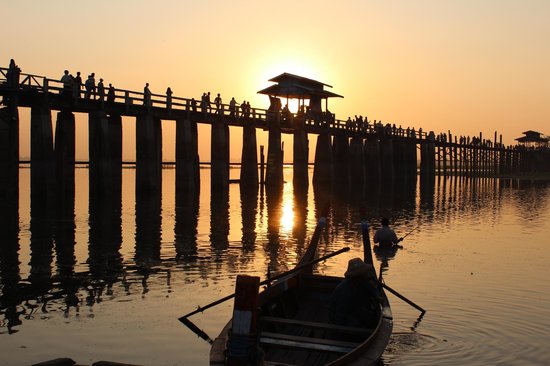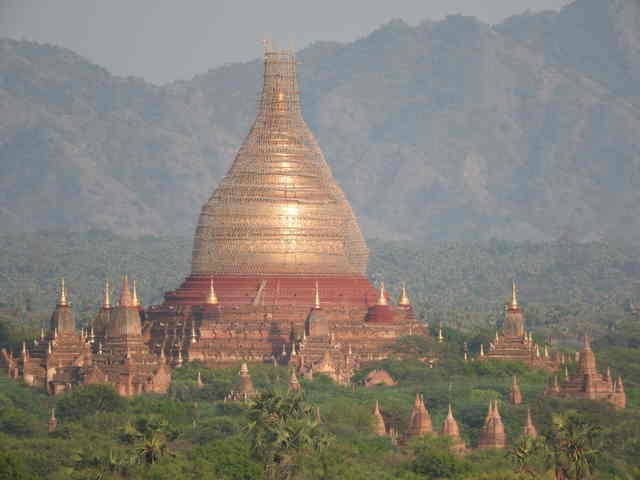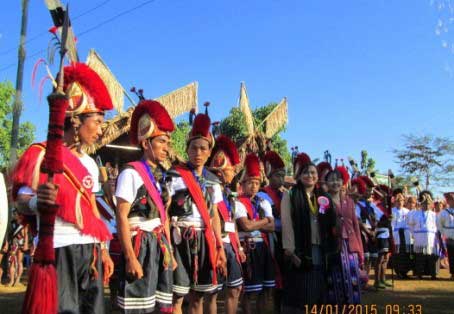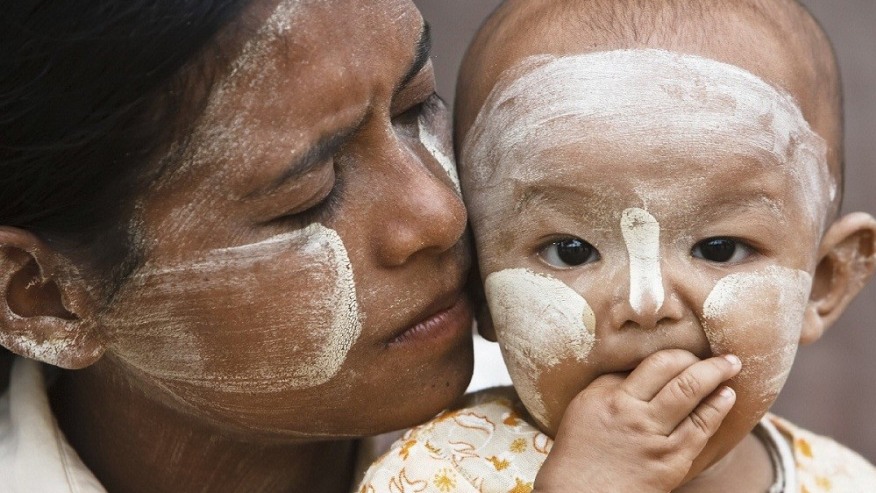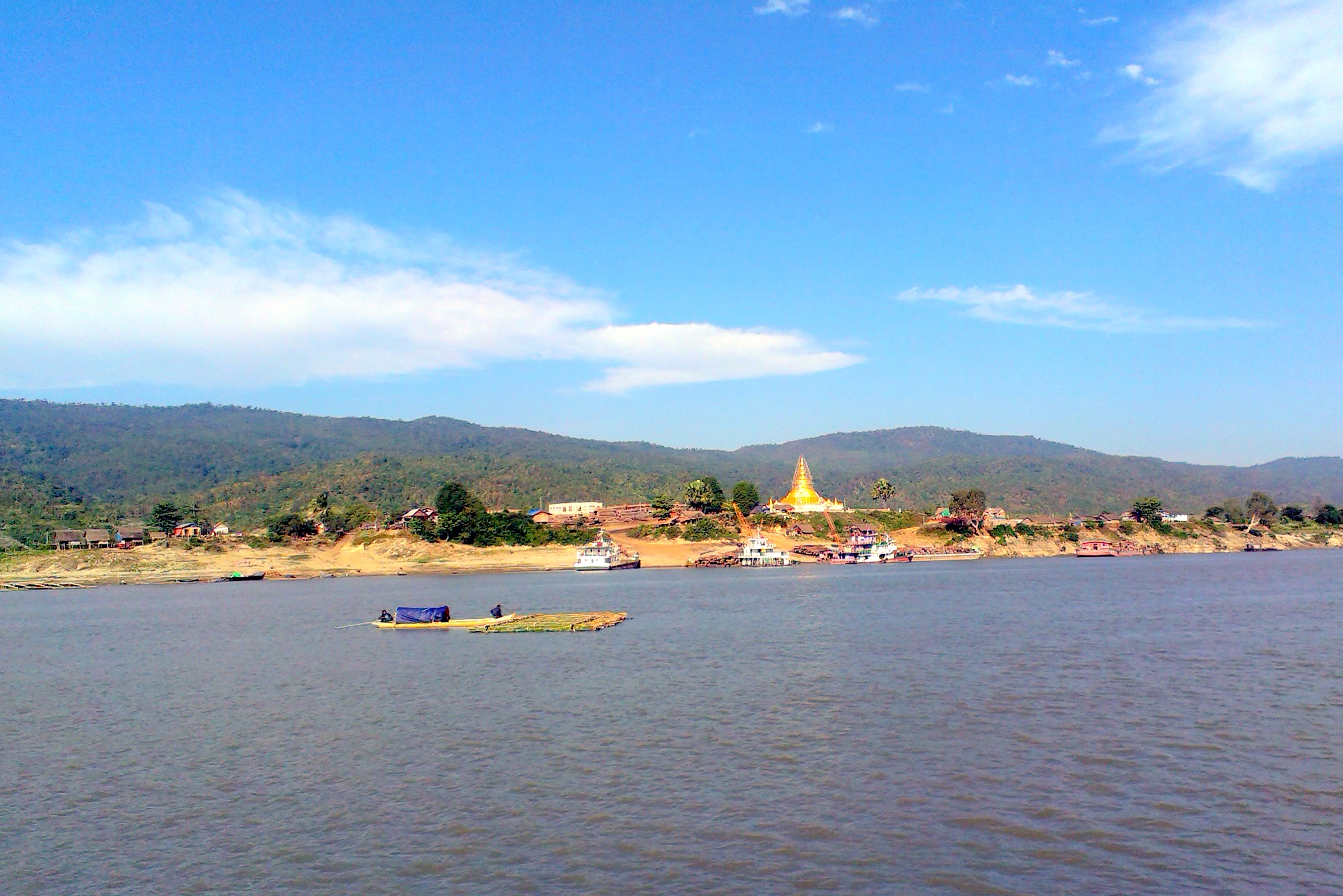The Mahamuni Buddha (The Great Buddha Image)

The major pilgrimage site, located southwest of Mandalay, Myanmar (Burma). It is very highly revered as wish-fill fulling Pagoda among the locals throughout the country. According to legend, the Gautama Buddha visited Dhanyawadi, the capital city of Arakan during his travels on a Proselytization mission to spread His Buddhism. The king Sandathuriya asked for the Budhha to let to copy very resemble with Him by casting statue. After casting, the Buddha gave embrace for seven times. So, this Buddha Image has been believed as living Buddha among the Buddhists in Myanmar. Devotees believe that the statues have healing qualities to rub a particular part of the body against the statues to cure themselves of various ailments and diseases.
According to the history, Thado Minsaw, who was Crown Prince and son of King Bodawpaya carried off the Mahamuni from Mrauk U (Rakkhine State) to Mandalay. In 1784, the Burmese under the military leadership of Crown Prince Thado Minsaw of Konbaung dynasty conquered the Kingdom of Mrauk U. The religious relics of the kingdom, including the Mahamuni Buddha image, were confiscated and installed in the Mahamuni temple or Pagoda at Amarapura, on the outskirts of the old capital of Mandalay. Besides the image, the Burmese military brought bronze figures which can be still found. According to the local people’s belief, by touching every part of the bronze figures can get relief from getting aches of body. To maintain these antiques, the archaeological department placed them in to the glass-made museum. They were originally Khmer statues, found at Angkor Wat in Cambodia, and were taken to Ayutthaya in 1431 by the Siamese. In 1564, the Burmese king Bayinnaung conquered Ayutthaya and took thirty such statues to Bago (Pegu). In 1599, King Razagri of Mrauk U invaded Bago and brought the statues to Mrauk U. Finally, Thado Minsaw took them to Amarapura in 1785. According to local belief, many more of these statues were brought from Arakan. However, King Thibaw melted many of them to cast cannons for fortification of his palace. Of the thirty statues Bayinnaung brought from Siam, only six remain today, and are displayed in the temple complex. They are a major attraction because of their purported healing qualities.
The Mahamnuni image got damage from fires in 1879 and in 1884, King Thibaw re-built the new temple to place the Image after preservation. Gold leaves are regularly applied to the face and body of the Mahamuni Buddha by male devotees. However, it is also noted that the right hand, crown and other iconographic characteristics of royalty are free of gold leaf covering, which gives an impression that these were later additions to the original image of the Mahamuni. This custom made by kings as they want to be healthy, powerful and great one according to the astronomical belief. It began in 16 century of Nyaung Yan era to Konebaung era 18 century.
A large number of inscription stones collected by King Bodawpaya are seen in a long gallery in the southeastern corner of the temple courtyard. These inscriptions, some of which are made from gilded marble and sandstone, have been collected from many regions of the country. Adjacent to the Buddha temple is the Mahamuni Museum, which contains displays of Buddhism throughout Asia. Mahamuni Buddha Image’s Face Washing Ceremony always celebrates at 4;30 am in the morning and it is very famous among the foreign travelers as well as Buddhist people. After this, sandalwood paste is applied to the image and it is again cleaned with towels and finally sprinkled with scented water. After the ceremony is completed, the used are returned to the devotees who keep these towels with reverence in their home shrines. Its major annual pagoda festival known as the 'Mahamuni Paya Pwe' ('pwe' meaning "festival") is held in early February, at the end of the Buddhist Lent to celebrate the history of the pagoda. The traditional orchestra dance group and cane-ball playing will be followed. Mahamuni pagoda has been to be one of the greatest religious site and top most tourist attractions in Myanmar.


